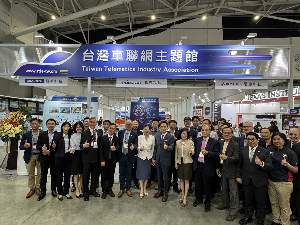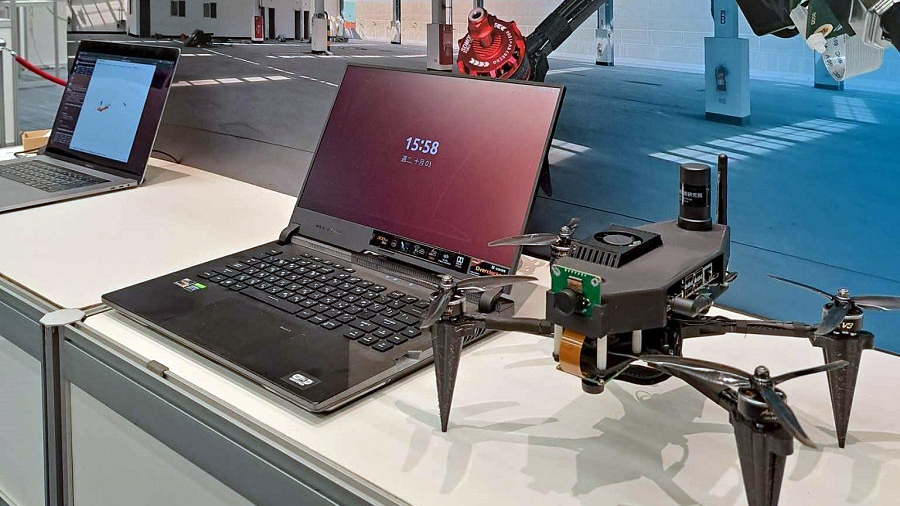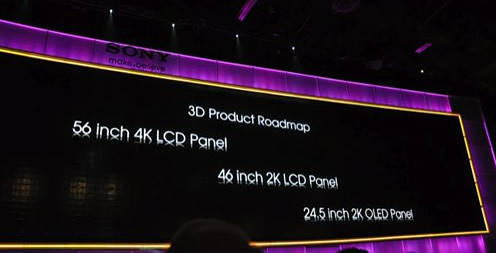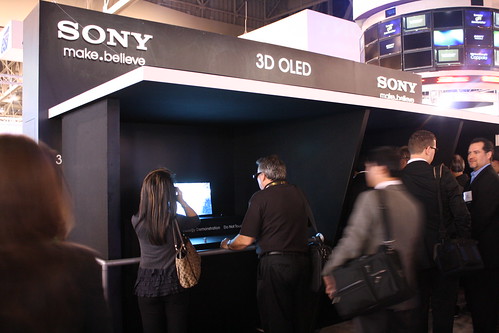TV makers to put out 3-D sets with cheaper glasses
LAS VEGAS – TV makers are blaming disappointing sales of 3-D TVs last year in part on the bulky glasses they came with. They're trying to tackle that this year by introducing sets that work with lighter, cheaper glasses of the kind used in movie theaters.
Manufacturers don't plan to completely supplant the 3-D TVs that require the heavier, battery-powered glasses, which went on sale last year for the first time. But Samsung Electronics Co. estimates 1 million 3-D sets were sold in the U.S in 2010, far short of its initial estimate of 3 million to 4 million, and the introduction of a competing technology a year later is another sign that the first 3-D TVs didn't live up to expectations.
LG Electronics Inc. was the first major TV to announce new 3-D sets Wednesday, a day ahead of the opening of the International Consumer Electronics Show in Las Vegas. LG, a South Korean company, said it will start selling two models, a 47-inch and a 65-inch one, later this year that use the lighter, cheaper glasses. Each will include four pairs. Current 3-D sets usually include one or two pairs of the bulkier glasses; some don't include any, requiring consumers to pay about $100 per pair.
"We're meeting consumers' needs by eliminating some of the pain points" by addressing the 3-D glasses issue, said Tim Alessi, director of new product development at LG Electronics USA. "It's going to be the most comfortable viewing experience, just like going to the movies."
Vizio Inc., one of the largest sellers of TVs in the U.S. but not a leader in the high end of the market, which includes 3-D sets, announced in December that it would sell a 65-inch 3-D set with the lighter glasses.
The two types of glasses are called "active" and "passive," and each has its benefits and drawbacks.
Last year's TVs relied on active glasses, which have battery-powered shutters that alternately black out each of the eyes to create the 3-D effect. They worked with some high-end flat-panel TVs with little modification required, but they require periodic charging. They also darken the image and may make it flicker.
The lighter glasses, called passive, are not much different from polarized sunglasses. They don't cause video to flicker, and glasses from any manufacturer will work with sets from another manufacturer, or in movie theaters. They don't block as much light as the active shutters, either. However, they only work with LCD TVs that have an extra layer to the screen, and in LG's implementation, the passive glasses cut the resolution of the image in half.
Not all major manufacturers are on board with the new screen technology. Panasonic Corp., which along with Samsung pioneered 3-D TVs last year, is sticking to active glasses.
Paul Gray, an analyst from the research group DisplaySearch, said the dearth of 3-D movies and TV channels, rather than the glasses, was the main factor holding back the market.
"TV manufacturers really got ahead of themselves in 2010, and they forgot that a TV is a tool to watch content," Gray said.
DisplaySearch estimates 3.2 million 3-D sets were sold worldwide last year. Going forward, the research group seems confident that the content will come, and predicts the number of 3-D TVs sold will grow to 18 million this year.
Samsung announced Tuesday that it's developing 3-D sets for passive glasses with RealD Inc., which controls patents on 3-D technology. Unlike LG's new TV sets, these would provide a 3-D picture at full resolution through the inclusion of some added electronics in the set. Samsung didn't announce specific models or a launch date.
Further out, there's the prospect of 3-D TVs that don't require glasses, as demonstrated by Toshiba Corp. Tuesday. However, the image quality on these early models is poorer than with TVs that use glasses. The TVs also limit where viewers can sit or stand; outside those areas, the 3-D effect doesn't work and the picture looks fuzzy. Toshiba aims to have sets on the market late this year or early next year.
Sony Corp. said it's also working on glasses-free 3-D sets, but appears to be further from commercialization.
Glasses-free displays work better at small sizes, where the limited viewing "zones" are less of a concern. Sony said it was making a portable 3-D glasses-free Blu-ray disc player with a 10-inch screen. Nintendo Corp.'s new handheld game gadget will also have a 3-D screen.
Toshiba is demonstrating a laptop at the show with a no-glasses 3-D screen. It's not a first — Sharp sold such laptops in 2003. Toshiba's version improves on Sharp's by tracking the viewer's eyes to help make the 3-D effect more consistent. Toshiba said the laptop is a prototype, and has no firm marketing plans. Laptops and standalone computer monitors compatible with 3-D glasses have been available for years, but haven't caught on.
Sony demonstrated a prototype of another 3-D viewing system that's "all glasses and no TV." It's a big visor that covers the eyes, containing two small displays, one for each eye. Together, they produce a 3-D effect. Such "head-mounted displays" that present 2-D images have been available for some years, but the low resolution produced by the small displays has limited their popularity. Sony is using a new display technology, organic light-emitting diodes, that may provide a better experience.
(Yahoo!)
















 Japan had the chance to buy
Japan had the chance to buy 


